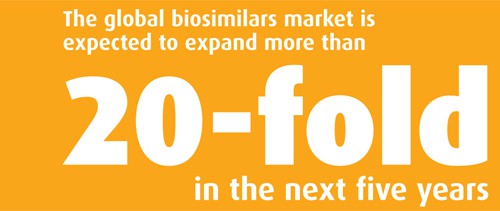
The inherently complex nature of biologic drugs makes them expensive to develop and impossible to copy in the manner traditionally associated with the approval of generic drugs. Second-entry biologics, otherwise known as subsequent entry biologics (SEBs) in Canada or biosimilars in the US, present a number of particular regulatory challenges.
To date, regulatory complexity and uncertainty, along with patent term and data protection exclusivity, have limited the introduction of SEBs within the Canadian, American and European markets. Stakeholders need to determine how best to navigate the emerging biosimilar landscape. In all three jurisdictions regulators must address a number of unresolved issues.
Canada’s approval pathway
Canada does not have a distinct approval pathway for SEBs. Currently, manufacturers seeking approval of an SEB must submit a complete data package and comply with the ‘new drug’ requirements under the Food and Drug Regulations. To supplement these legal requirements, Health Canada has issued a Guidance Document on the approval of SEBs. Because the Guidance Document does not have the force of law, parties may encounter difficulties in seeking to challenge aspects of the SEB decision-making process. To date, Health Canada has approved only one SEB, Omnitrope (a recombinant human growth hormone), the approval of which predated the finalisation of the Guidance Document by Health Canada.
In Canada sponsors must establish a ‘link’ between a foreign reference product and an equivalent product approved in Canada
In all jurisdictions the approval of a biosimilar depends on a demonstration of similarity with a designated reference biologic drug. Canada’s Guidance Document requires an SEB to be ‘highly similar’ to its reference product. While the SEB’s dosage form, strength, and route of administration should be the ‘same’ as its reference, the SEB’s active substance is required only to be ‘similar’. The extent of studies and analytical techniques required will be assessed on a case-by-case basis in view of the particular biologic product involved. An SEB sponsor can demonstrate similarity based on a combination of analytical testing, biological assays, and non-clinical and clinical data, but the weight of the evidence should be provided by analytical and biological characterisation.
An SEB sponsor may demonstrate similarity by relying on a foreign reference biologic that is not approved for sale in Canada. The sponsor must establish a ‘link’ between the foreign reference product and an equivalent product approved in Canada by proving that the foreign reference product is marketed by the same company as the Canadian version of the product. Currently, use of a foreign reference product is unique to Canada.
Innovator biologic companies may benefit from traditional intellectual property protection such as patent term, proceedings under the Patented Medicines (Notice of Compliance) Regulations (‘PM(NOC)’ Regulations), and data protection. Under the data protection provisions of the Food and Drug Regulations, biologics are entitled to the same eight-year term of data exclusivity as regular drug molecules, with the potential for a six-month paediatric extension upon submitting eligible clinical trials. In addition, an SEB sponsor must comply with the requirements of the PM(NOC).

Regulations to summarily address allegations of patent infringement and/or validity prior to market entry. However, concerns remain regarding the protection of certain types of patents (eg, process patents) that are ineligible for listing on the Patent Register under the PM(NOC) Regulations, yet can be important for protecting the patent rights of biological drug products in particular. In May 2012 the first proceeding under the PM(NOC) Regulations involving an SEB was initiated with respect to Amgen’s innovative biological Neupogen (filgrastim).
Given the constitutional division of powers in Canada, the future of SEBs with respect to drug interchangeability is uncertain. Although Health Canada states that authorisation of an SEB is not a declaration of pharmaceutical equivalence with its reference drug, the federal government does not have jurisdiction to regulate the interchangeability of SEBs or other generic drug products. Currently, the provinces will independently regulate whether an SEB can be substituted or interchanged for its reference drug, as well as the price for which the SEB will be reimbursed on the respective provincial drug formularies.
The Biologics Price Competition and Innovation Act
The US regulatory biosimilars regime is also in an early, uncertain stage. The biosimilars pathway was recently established when President Obama signed into law The Patient Protection and Affordable Care Act on March 23, 2010, which amended the Public Health Service Act (‘PHSA’) in order to include an abbreviated pathway for biological products shown to be biosimilar to or interchangeable with an FDA-licensed reference product. This pathway is provided in the part of the law known as the Biologics Price Competition and Innovation Act of 2009 (‘BPCIA’). Biosimilar applications are submitted under section 351(k) of the PHSA (42 USC. § 262).
The biosimilar sponsor must demonstrate that the product is ‘highly similar to the reference product’; that the biological product and reference product utilise the same mechanism for the condition of use prescribed, recommended or suggested in the proposed labeling; that the condition of use prescribed, recommended or suggested in the proposed labelling for the biological product has been previously approved for the reference product; that the route of administration, dosage form and strength of the biological product are the same as those of the reference product; and that there are no ‘clinically meaningful differences’ between the biological product and the reference product in terms of the safety, purity and potency. The US Food and Drug Administration (FDA) draft guidance documents note that foreign reference products may be used if an appropriate bridge can be built to a US reference product, however, it is unclear as to what this bridging data entails.
The US market may be friendlier to pharmaceutical companies wishing to develop innovative biologics. Unlike Canada, the US has extended data protection for biologic drugs compared to traditional chemical drugs. A biosimilar cannot be approved under the 351(k) pathway until 12 years after the reference product was first licensed, whereas a generic chemical drug can be approved after only five years. This prolonged period recognises the fact that biologics require considerable research and development investments compared to traditional chemical drugs. Currently, the US has the largest biologics market while biosimilars are still relatively nonexistent. OMNITROPE is the only second-entry biologic approved for use in the US, and was approved under an already-existing procedure before the biosimilar pathway was created.
Like Canada, the US does not yet have in place regulations that fully address interchangeability. Under the BPCIA, a biosimilar may be interchangeable with its reference product if the biosimilar can be ‘expected to produce the same clinical result as the reference product in any given patient’ and for a biological product that is administered more than once to an individual, the ‘risk in terms of safety or diminished efficacy’ when switching between the reference and the biosimilar is not greater than the risk of using the reference product without such alternation or switch. The industry is awaiting further guidance from the FDA on interchangeability in order to address any discrepancies between state policies that already address substitution for interchangeable biologics.
Europe – advanced, but still developing
Europe has the longest experience in implementing a biosimilar pathway. Since 2005, the EU has governed biosimilars pursuant to Directive 2001/83/EC, as amended, and a series of accompanying guidelines provided by the European Medicines Agency’s Committee for Medicinal Products for Human Use (CHMP). Similar to small molecule drugs, biologics receive ten years of data exclusivity, after which a biosimilar may be approved. Fourteen biosimilars have been approved by the European Commission on advice from the CHMP. The most recent of these were two monoclonal antibodies – proteins substantially larger and more complex than previously approved biosimilars. The two infliximab-based products, which will be sold as Inflectra by Hospira and Remsima by Celltrion, will compete in the EU with Johnson & Johnson’s original infliximab brand Remicade. The approvals signal strong support from European regulators for a wider array of biosimilar approvals within the European market.
Nevertheless, Europe’s biosimilar regulations are still developing. The CHMP frequently publishes additional guidelines on biosimilars. The most recent guidance document suggests that the EU will soon join Canada in allowing a foreign reference product for comparability studies. The biosimilars sector has reached varying stages of development among different jurisdictions. Europe has by far the most advanced pathway resulting in an established biosimilars market that continues to introduce more complex biologics. Canada continues to have the shortest data exclusivity term, potentially allowing biosimilars to enter the Canadian market before the US and EU markets. In all three jurisdictions, the biosimilar regimes remain uncertain. Only time will tell whether greater certainty develops and ultimately results in an effective SEB approval pathway.




